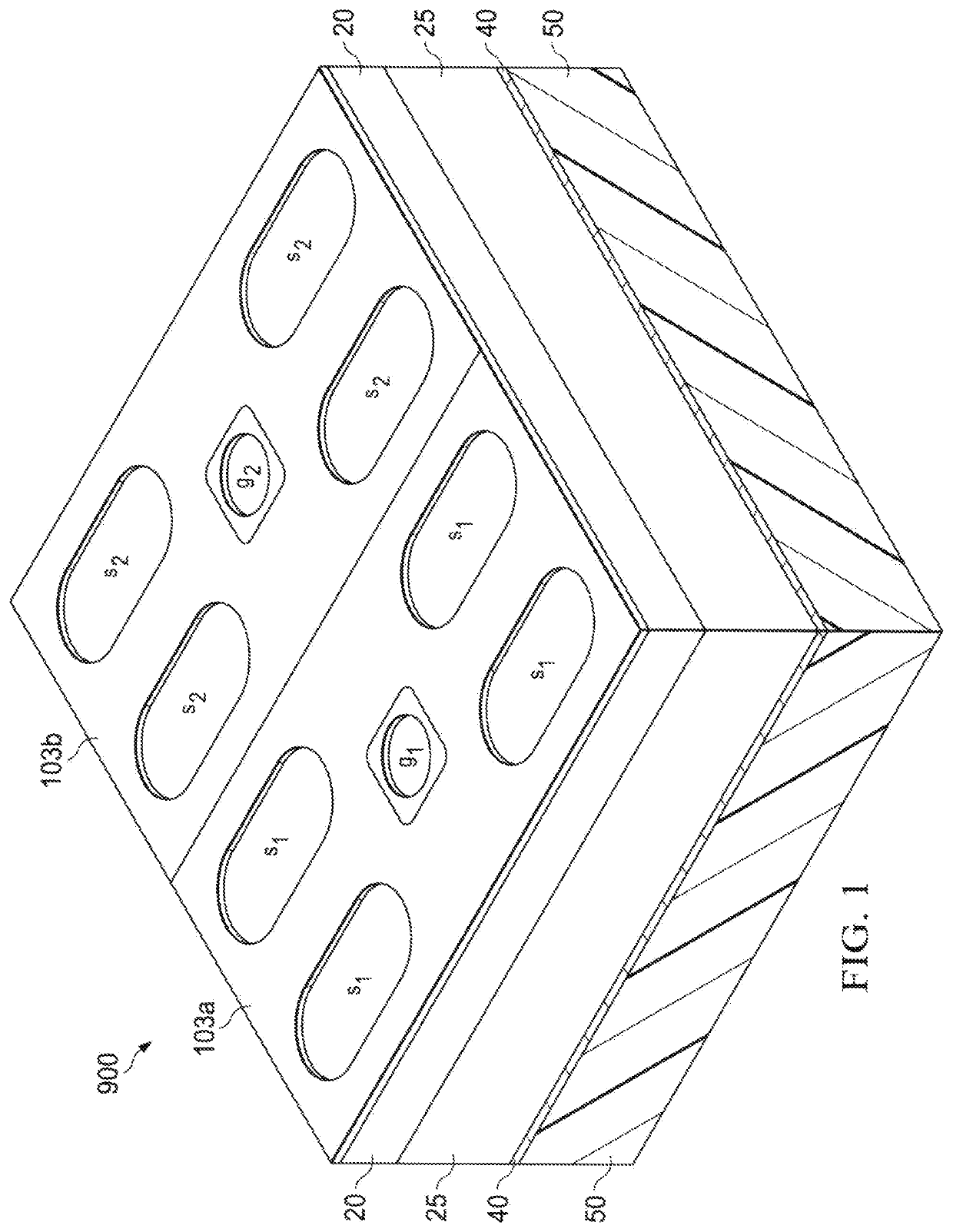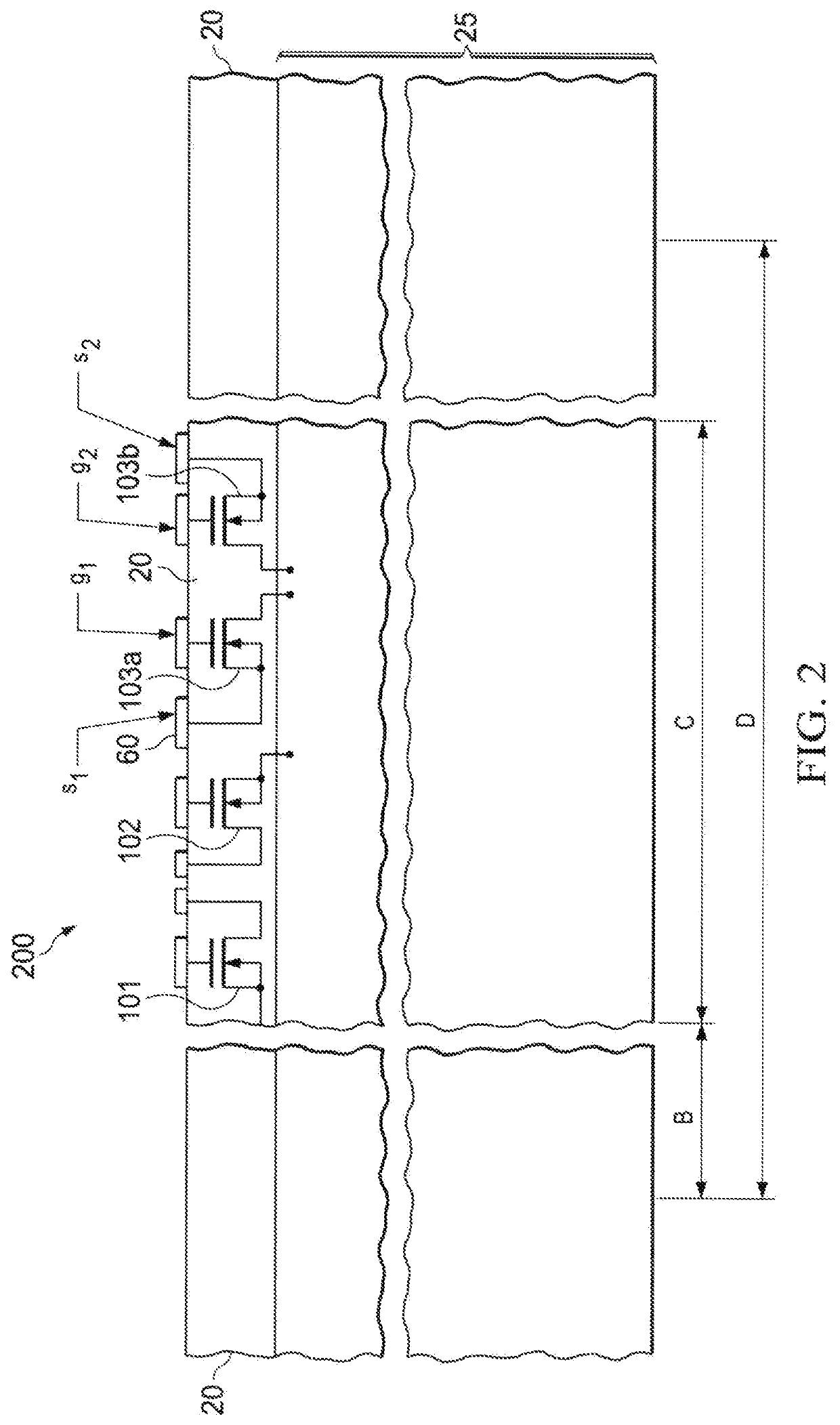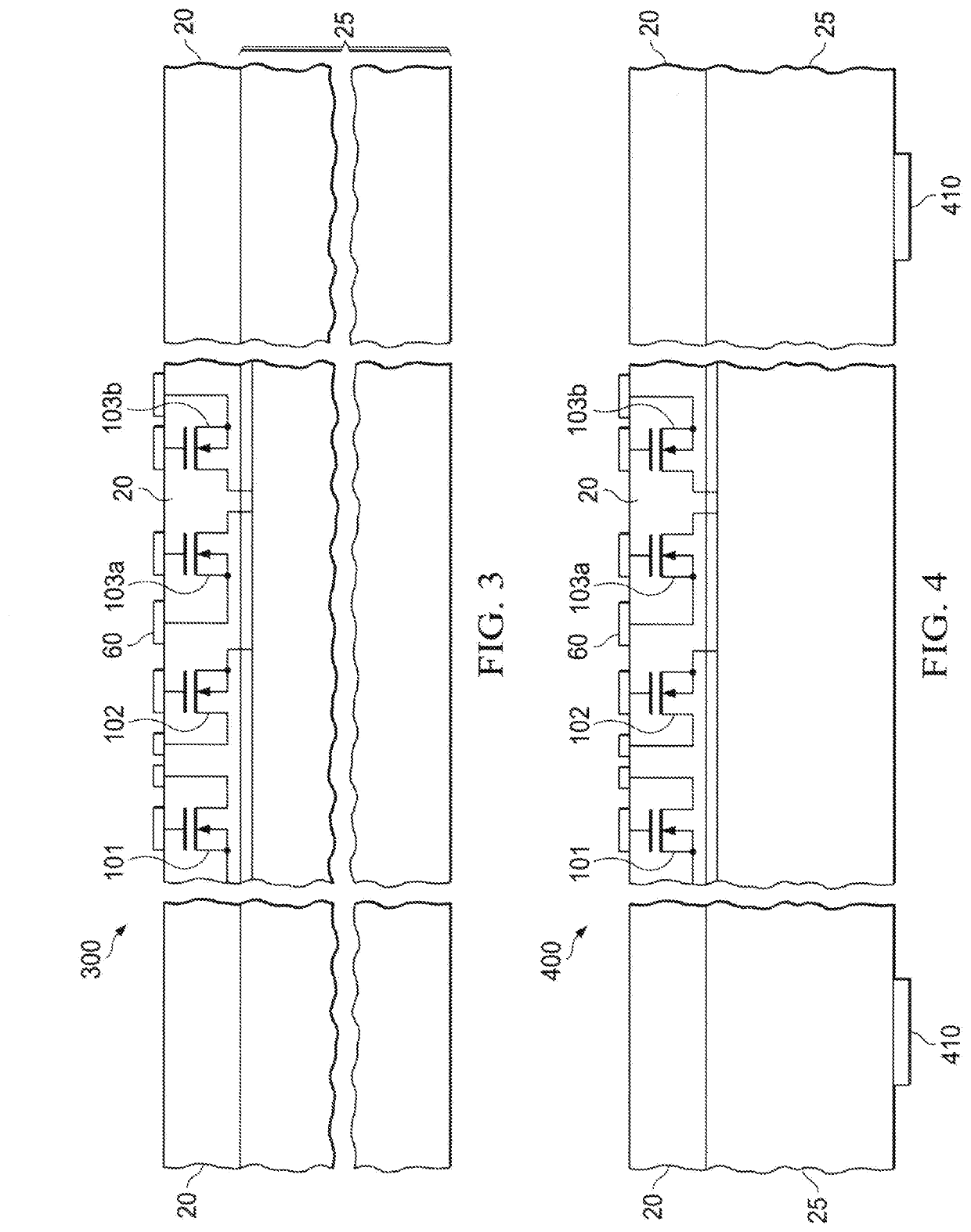Thinned semiconductor chip with edge support
- Summary
- Abstract
- Description
- Claims
- Application Information
AI Technical Summary
Benefits of technology
Problems solved by technology
Method used
Image
Examples
Embodiment Construction
[0034]FIG. 1 depicts a perspective view of a semiconductor device 900 that embodies certain aspects of this invention. In this embodiment, elements 20 and 25 are silicon, in which element 25 is a substrate layer, element 20 is an epitaxial layer grown on top of the substrate layer 25. The electrical resistivity of the epitaxial layer 20 is higher than the resistivity of the substrate 25. Layer 20 and layer 25 Layer combine to make up the semiconductor chip in the device 900. Layer 40 is a metal layer and is referred to as the back-side metal layer, which makes ohmic contact to the back side of the silicon chip. Layer 50 is a non-conductive layer, which in this embodiment comprises a molding compound, an epoxy material mixed with filler particles. Layer 50 has a flat and smooth back side suitable for laser marking.
[0035]The silicon chip in this embodiment contains a pair of trench MOSFET devices 103a and 103b. The drain nodes of the two MOSFETs are connected electrically at the back-...
PUM
 Login to View More
Login to View More Abstract
Description
Claims
Application Information
 Login to View More
Login to View More - R&D
- Intellectual Property
- Life Sciences
- Materials
- Tech Scout
- Unparalleled Data Quality
- Higher Quality Content
- 60% Fewer Hallucinations
Browse by: Latest US Patents, China's latest patents, Technical Efficacy Thesaurus, Application Domain, Technology Topic, Popular Technical Reports.
© 2025 PatSnap. All rights reserved.Legal|Privacy policy|Modern Slavery Act Transparency Statement|Sitemap|About US| Contact US: help@patsnap.com



